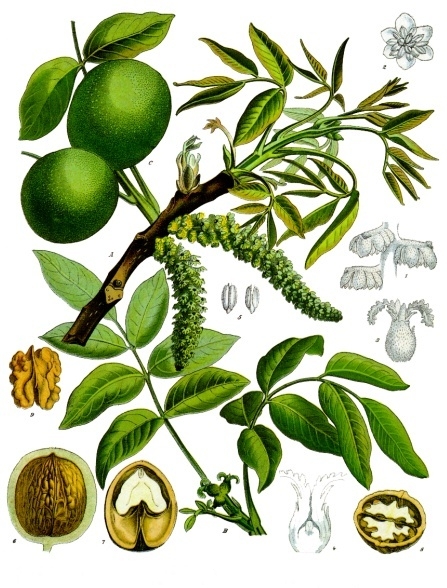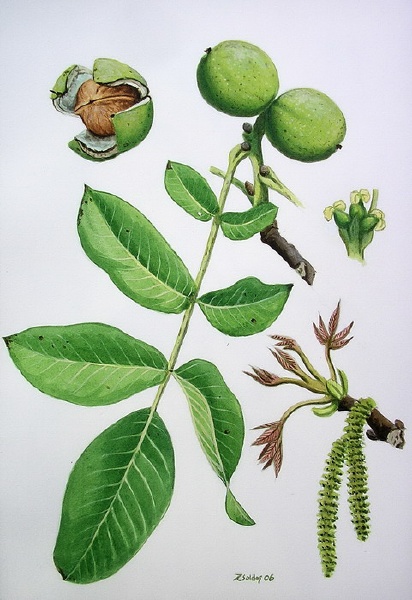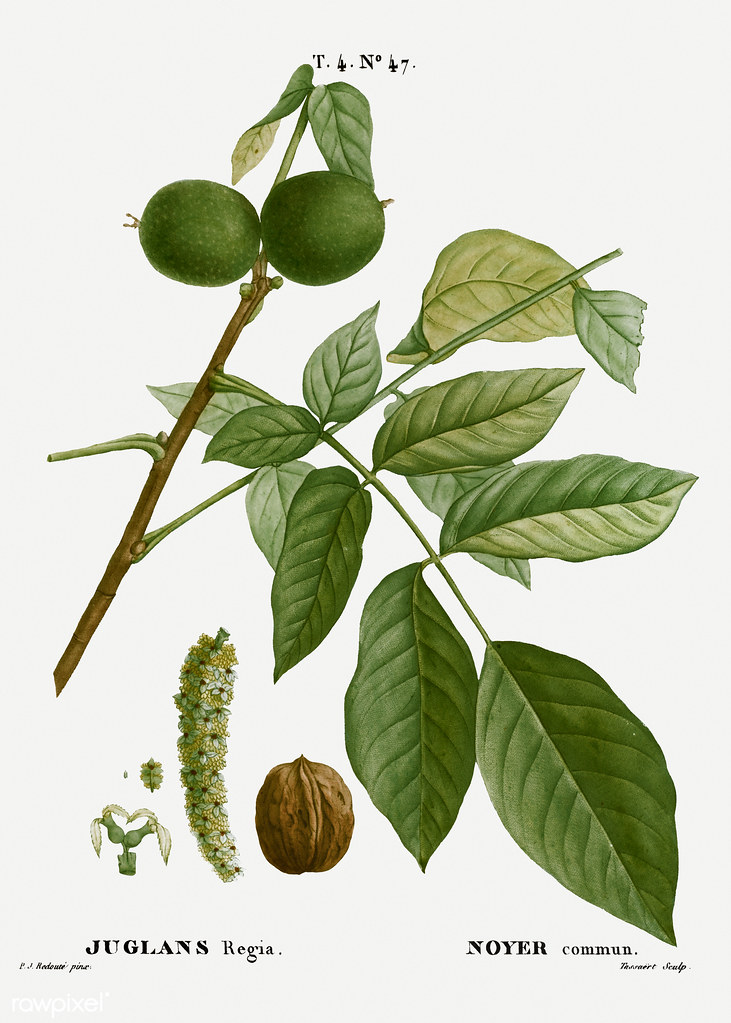The walnut is a very vigorous species with a solid and straight trunk. It can reach 30 meters in height and assume a majestic posture. In the adult specimens the crown is ample and harmonious.
The roots are robust and rooted; they tend to develop vertically in the ground, exceeding even the 3 meters, while horizontally they exceed by 5-6 times the projection of the crown. The bark is smooth and silvery-white in the initial stages of growth then tends to develop typical longitudinal fissures.
The leaves are deciduous and compound and have elliptical-oval shape (up to 35 cm long); their margin can be whole or slightly toothed. The top page of the leaf has a dark green color while the bottom page is much lighter.
It is a monoecious species that is, the male and female flowers grow on the same plant. The male flowers are united in pendulous inflorescences, called aments (10-15 cm long), of green colour that appear before the appearance of the leaves. Female flowers can be solitary or gathered in groups of 2-3 and appear on new shoots, simultaneously with the leaves. They hatch after the male ones.
The walnut is an anemophilous species, which means that its pollen is carried by the wind.
The fruit of the walnut, from the botanical point of view, is a 'drupe'. It has a green exocarp (called husk) that at maturity blackens and releases the endocarp, that is, the walnut itself. The walnut is composed of two woody valves that enclose the seed (kernel) which is the real edible part.
The first fossil traces of this plant date back to the late Tertiary and have been found in Europe and Greenland. The walnut seems to have disappeared from Europe in the last ice age, surviving in central-western Asia. Here it should have been domesticated during the Bronze Age. The walnut was then reintroduced in Europe between the seventh and fifth centuries B.C. The Greeks thought that nuts were a fruit of the gods and the Latins called them 'acorn of Jupiter'.
In the Villa of the Mysteries of Pompeii walnuts are depicted on the walls of various buildings and in Herculaneum, in the House of the Deer, nuts and various nuts are depicted in a straw basket. In the Vesuvian area have also been found findings of nuts referring to a dried product much appreciated for food consumption.


